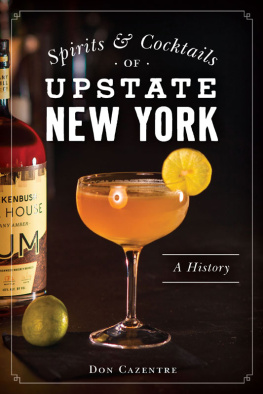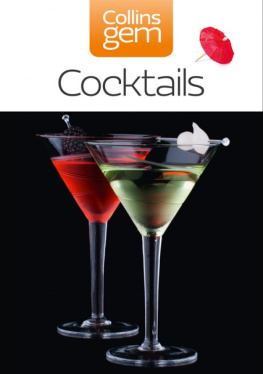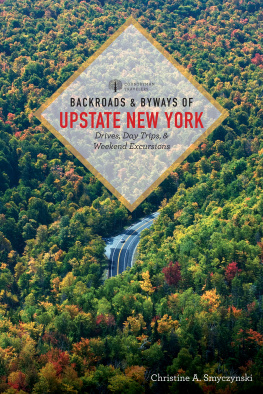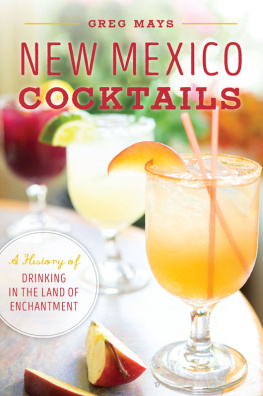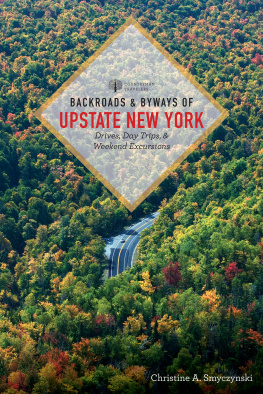


Published by American Palate
A Division of The History Press
Charleston, SC
www.historypress.net
Copyright 2017 by Don Cazentre
All rights reserved
First published 2017
e-book edition 2017
ISBN 978.1.43966.315.8
Library of Congress Control Number: 2017945030
print edition ISBN 978.1.46713.700.3
Notice: The information in this book is true and complete to the best of our knowledge. It is offered without guarantee on the part of the author or The History Press. The author and The History Press disclaim all liability in connection with the use of this book.
All rights reserved. No part of this book may be reproduced or transmitted in any form whatsoever without prior written permission from the publisher except in the case of brief quotations embodied in critical articles and reviews.
CONTENTS
ACKNOWLEDGEMENTS
Over the last decade or so, Ive collected and read lots of books on the topic of mixed drinks. They include The Joy of Mixology by Gary Regan, Vintage Spirits and Forgotten Cocktails by Ted Haigh and Imbibe! by David Wondrich, not to mention old reprints like The Stork Club Bar Book, The Old Waldorf-Astoria Bar Book and the one that started it all: How to Mix Drinks, written by Jerry Thomas in 1862.
It seems I was destined to write my own book on the history and culture of spirits and cocktails. Needless to say, the drinks authors cited above, and others, provided an invaluable resource. They proved that drinking is a suitable topic for a book. If youre interested in drinks and their stories, you need to read their work.
Once I started, it took more than a yearand lots of helpto complete this book.
A big thank-you goes to those in the Upstate drinks industry who took the time to meet and welcome me to their distilleries, bars and shops for interviews. Special mention goes to Jori Jayne Emde at Fish & Game in Hudson, Ralph Erenzo at Tuthilltown Spirits in Gardiner, Jason Jay Bowers at Excelsior Pub in Albany, Doug Plummer at the American Hotel in Sharon Springs, Joe Fee at Fee Brothers in Rochester, Jason Barrett at Black Button Distilling in Rochester, Brian McKenzie at Finger Lakes Distilling near Watkins Glen, Joe Myer at Myer Farm Distillers in Seneca County, Chris Uyehara at Last Shot Distilling in Skaneateles, the Carvell brothers at Old Home Distillers in Lebanon, Mike Aubertine at Clayton Distilling in the Thousand Islands, Ben Reilley at Life of Reilley Distilling and the beverage and nightlife crew at Turning Stone Resort Casino in Verona. Also thanks to Eva Nicklas and Kathryn Serriani of the Lewiston Council on the Arts, Natalie Stetson at the Erie Canal Museum and Jeremy Hammill of the Scotch n Sirloin in DeWitt.
As a longtime journalist, I had little direct experience with historical research. For help with that, Im indebted to Kihm Winship and his work on Skaneateles history, Dennis Connors of the Onondaga Historical Association in Syracuse and Craig Gravina of the New York State Museum in Albany, who pointed me to the records of the archaeological dig at the Quackenbush Still House site.
Thanks to Amanda Irle, my contact at The History Press, for her guidance and patience. To my sister, Julie Cazentre, much appreciation for the support and the place to crash when in the Albany area.
And as always, to my wife, Maureen Fitzsimmons, thanks for everything.
INTRODUCTION
To some extent, Upstate New York exists in the giant shadow cast by one of the worlds greatest cities. No one would argue about New York Citys place in history, certainly not in the history of a subject as universal and sophisticated as spirits and cocktails.
And yet Upstate New York, from the Hudson Valley to the Niagara River, has its own long and grand connection to the history of drinks and drinking in America.
Colonial-era rum was distilled here. The first recorded definition of the word cocktail was printed here. Whiskey floated down the Erie Canal here. The most celebrated bartender of the golden age of the cocktail was born here. Along with history, there are plenty of storiesmyths and lore, some fiction. They involve roosters feathers, angels seeking their wings and more.
But its not just about old stories. Upstate New York today is the home of a resurgent cocktail culture, fueled by more than one hundred modern distillers and beverage makers, countless bars and untold numbers of drinks enthusiasts. They complete the tale.
No book this size can tell the complete story of a region so big, a history so long and a contemporary drinking culture so diverse. Consider it a guide to some of the best stories, old and new. For the most part, theyre told in chronological (historical) order. Every so often, however, theres a detour to a modern place or person that complements the history. And there are cocktail recipesmore than sixty of themfrom historic classics to current creative concoctions.
Grab a drink, and lets begin.
UPSTATE NEW YORK AND
THE ORIGINS OF THE COCKTAIL
HISTORY, STORIES, LEGENDS
On May 13, 1806, the editor of a newspaper serving Hudson, New York, responded to a query from a reader. The reader had encountered the phrase cock tail in the previous weeks edition and wondered what it meant.
Cock tail, then, the editor wrote, is a stimulating liquor, composed of spirits of any kind, sugar, water and bitters.
That answer established an enduring link between Upstate New York and that great American invention, the cocktail.
It may not have been the first known use of cock tail or cocktail in print, though it certainly seems to be an early one. It does appear to be the first time in recorded history that the word was accompanied by a definition of a certain type of mixed alcoholic drink.
In 1806, Hudson was a prosperous whaling and merchant town on the Hudson River south of Albany. There seems to be no specific reason why it should be a cradle of the cocktail. But Hudson isnt the only Upstate locale with a claim to cocktail history.
Folks in Lewiston, on the Niagara River near Niagara Falls in western New York, contend that their town is the place where, for the first time, a tavern keeper placed a roosters feather in a drink and called it a cock tail.
A place called the Four Corners in Westchester County (near the current town of Elmsford) has a related claim. In his Revolutionary War novel TheSpy, author James Fenimore Cooper assigns the birth of the feathery drink called the cocktail to a woman running a tavern in Four Corners. That may have been the first recorded use of the word cocktail in fiction. It turns out that Cooper, a native Upstate New Yorker, once spent some time in Lewiston, where he may have first heard (or even witnessed) the cocktail story.

Masthead of the Balance & Columbian Repository, Hudson, New York, which printed the first definition of the word cocktail in 1806. Courtesy of Ted Haigh.
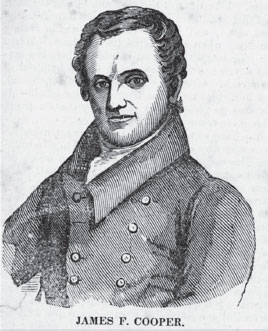
Next page
